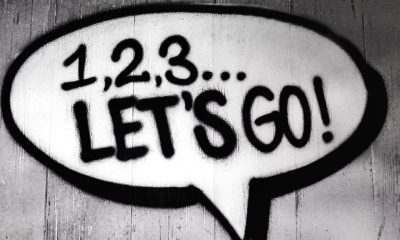Business
TopRanked.io Weekly Affiliate Digest: What’s Hot in Affiliate Marketing [HealthTrader Affiliate Program]
Hijacking victimhood for maximum profit extraction. TikTok’s done it. Zuckerberg’s done it. And now, we’re gonna show you how to do it. This week, we do a deeeeeep dive into victimhoods: how to spot ’em, how to create ’em (yes, create them), and how to talk to them. Why? So you can monetize them. And we’ll also be reviewing the HealthTrader affiliate program to help with that last bit.
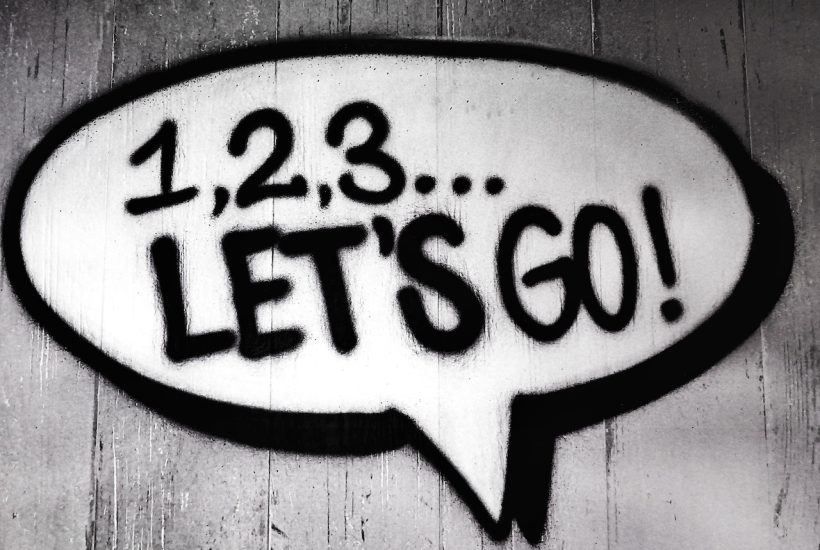
Quick Disclosure: We’re about to tell you the HealthTrader affiliate program is pretty great. And we really mean it. Just know that if you click on a HealthTrader affiliate program link, we may earn a small commission. Your choice.
This week, we’re talking about victims.

No, not that sorta victim.
This sorta victim.

Why?
Because money.
Lots of money.
TopRanked.io Affiliate Partner Program of the Week — HealthTrader Affiliates
Before we get to the unhealthy bit (victimhood), let’s first take a look at something healthy.
The HealthTrader affiliate program.
Why the HealthTrader affiliate program in particular?
Well, first, the HealthTrader’s a great way to monetize an affiliate opportunity we’re highlighting this week (see the “news”).
And second, because the HealthTrader affiliate program is also a really, really good program.
Here’s why we love the HealthTrader affiliate program.

HealthTrader Affiliate Program — The Product
The HealthTrader affiliate program is all about one thing in general (health), but more things than you can count on your fingers and toes in particular.
Basically, HealthTrader gives you instant access to a whole bunch of health-related products that you can promote for maximum affiliate profits.
Sleep aids? — HealthTrader’s got ‘em.
Muscle gainers? — HealthTrader’s got ‘em.
Colon detoxes? — HealthTrader’s got ‘em. (Pay attention to this one — direct monetization tie in with our “news” later)
Prostate support? — Yep, HealthTrader’s got ‘em.
Basically, if it’s a health product and you can think of it, the HealthTrader affiliate program probably has it.
And the best part is, HealthTrader matches every one of those products to a great commission.

HealthTrader Affiliate Program — The Commissions
I’m gonna put it out there straight away — the commissions in the HealthTrader affiliate program are some of the best you’ll find anywhere.
Here’s a sample of what HealthTrader will pay you:
- You sell “Sleep Support Plus” — HealthTrader hands you 50%
- You sell “Max Gains” — HealthTrader gives you a 30% cut
- You sell “Colon Detox Plus” — HealthTrader deposits 45% into
Basically, if it’s under the HealthTrader affiliate program umbrella, you can earn anywhere from 30-50% revshare on it.
About the only thing paying less than this (which I forgot to mention in the HealthTrader product section) is on clinical appointments (yeah, you can sell those too).
If you book people through one the the platforms (OnlineClinic, euroClinic, etc.) in the HealthTrader affiliate program, then HealthTrader will send a 17% cut your way.
Sweet.

HealthTrader Affiliate Program — Next Steps
As usual, I’m going to cut this HealthTrader affiliate program review short here.
Not because there’s nothing else to tell you about HealthTrader. Rather, why repeat every detail about HealthTrader when we’ve already covered them before?
So, if you wanna see more details on HealthTrader, then head on over to TopRanked.io for our in-depth HealthTrader Affiliate Program review.
Alternatively, if you’re the type who knows a good thing when you see it, then simply head here to signup for the HealthTrader Affiliate Program today.
Either way, you won’t lose.

Affiliate News Takeaways
It feels like we’re stuck in a bit of a terminally-repeating news cycle right now.
Maybe it’s just the summer.
Or maybe it’s the ongoing obsession with whatever Trump’s up to (or has previously been up to).

Or maybe it’s something else.
In any case, there hasn’t really been that much affiliate-worthy news for us to sink our teeth into lately.
We have, after all, covered just about everything we can juice from Trump (see our Tariff War Affiliate Opportunities edition for our last installment).
And elsewhere, the biggest news seems to be that whole WNBA/flying dildos mystery, which has now, apparently, been solved.
But, we also wrote about the WNBA as an affiliate opportunity recently — back in our LVBet Affiliate Program review edition.
And as for the “crypto” slant to that story… well… I personally couldn’t give a…

I mean, sure, it’s funny. But there’s not much to it that “we can hijack for our own affiliate purposes”.
And this same terminal loop seems to be repeating elsewhere, too.
Sportsbooks are still oscillating around the future of prediction markets — a story we’ve covered a couple of times now, most recently in our 1xBet Partner Program review.
Newsfeeds are still brimming with “age verification” (porn) stuff, which we last covered as an opportunity just a month ago in our coverage of the Best VPN Affiliate Programs. (Surely you see the link between the two…)
And so that leaves me here, without anything “new” to bring to the table.
So, where to from here?
Well, maybe it’s time to do what I did last week in our Showcase IDX Affiliate Program review edition — pick up on an old news cycle that’s been repeating for so long now that it’s maybe worth a fresh look.
Enter victimhood.

Now, before you get too excited, this isn’t gonna be the usual “let’s roast the libs” kinda fare you’re expecting.

Spoiler alert #1 → I’m lumping all you manosphere and whatnot guys into the same basket (and calling you all Marxists at the same time… but we’ll get to that later.)

And as for why I’m going down this victimhood path…
Spoiler alert #2 → So you can identify emerging “victimhood” markets and hijack them early for maximum monetization.

So let’s start at the only logical place.
~150+ years ago — Nietzsche, Freud, and Marx.
Why?
Two reasons.
First, if you wanna get good at identifying niches and maxing monetization, then you first gotta analyze your will to Oedipus in terms of its class consciousness.

Nah, just kidding.
I actually wanted to start here because it’s sort of where I see the emergence of the modern victim happening.
And as for the second reason I’m starting with Nietzsche/Freud/Marx — I wanna give you a different reading of modern victimhood. A reading that goes beyond the tired old “nihilism has taken over so people are looking to fill the religion/community/whatever void with meaning/identity/blah blah blah…”
Instead, I wanna give you a more structural/aesthetic background to modern victimhood. I think that might help us identify when/where/how to tap into victimhood as a monetizable asset.
So let’s start with Nietzsche.

Back in the day, Nietzsche came up with a few important ideas — “master morality”, “slave morality”, and “ressentiment”.
In master morality, GOOD == strength/self-affirmation/power, and; BAD == weak/undesirable/pitiful.
The salves — powerless, unable to retaliate, and resentful (“ressentiment”) — thus develop an inverted moral code.
The powerful get framed as “evil” and the oppressed gain “the right to judge”.
Now, they cast themselves as “good” by way of virtues like humility, patience, and… yep… you guessed it… suffering.
Victimhood becomes “virtue”.
Values, inverted.
Comfort food for the weak of mind.
And now, you basically understand all of Nietzsche.
Let’s move on to understanding all of Marx.

Love him or hate him, Marx is an important figure in the emergence of the modern victim.
He gave the victim a material/structural causal narrative.
Just think about some of the terms commonly associated with him.
- Class Consciousness — develops from your position in a hierarchy of production. (Your grievances are systemic, rooted in capitalist vs worker.)
- Alienation — you get separated from the product, process, and others. (Now your discontent is the result of structural economic forces, not your individual failure.)
- Exploitation — the appropriation of your labor for profit. (Now your victimhood has a unit [inequality/power asymmetry] and a value scale [economic])
You kinda get the point.
It’s all material/structural.
None of it’s your fault — blame the system.
Now let’s talk Freud.

Besides becoming a cult hero in the southern U.S. states thanks to his normalization of certain behavior, Freud also made a few important contributions. Notably, to modern victimhood.
First, Freud frames “victims” as merely being shaped by the past — your “trauma” is just an unresolved psychic wound. I.e., it’s not your fault.
“My trauma was inflicted on me by formative events outside of my control.”
Which events? Oh, never mind. You don’t need to be accountable. Just blame “repression” — your unconscious exclusion of painful experiences.
“I don’t remember which events but they’re totally to blame.”
And just like that, you’ve got an infallible background against which you can present your “neuroses” as something outside of your control.
“Trauma. Repression. I can’t help being a victim.”
And now you understand everything there is to know about the modern victim.

Now, obviously, describing these theories in ~100 words each is a massive speed run — heaps skipped over.
And now I’m going to speed run even faster through a bunch of stuff that happened after them. (Because, while I wanna lay out the background, I also wanna get to the good stuff… the affiliate $$$$)
So here goes.
Early 20th century → all this thinking started to infect cultural/identity stuff — critical theory extends Marxist analysis to culture… victimhood now gets encoded in mass media/ideology.
Kafka… War literature… “Lost Generation”.
Psychoanalysis infects mainstream consciousness with the idea that everyone is “wounded” in some way.
Then…
Mid-to-late 20th century → Victims gain “epistemic authority” — the authority/virtue granted due to your favorable relations to what is “good”.
And by good, I mean “ressentiment” (Nietzschean “slave” inversion) good.
Think postcolonial theory — the colonized are the lone bearers of truth, inaccessible to the colonizer.
Or feminist theory — the lived experience of the oppressed becomes superior political knowledge.
You get the gist.
Basically, the idea emerges that if you’ve been harmed, you have a special insight into (social) justice.
The germinal SJW emerges, which leads us to…
Today → Harm is now read through both Marxian and Freudian lenses. Trauma + structural harms… hello the sudden interest in using “intersectionality” to give life to “girls with ADHD” and whatever other identities we now see.
Nietzsche’s “ressentiment” now becomes hyper visible. (Victimhood is now a legitimate “claim” and a “strategic position”.)
A mish-mash of hyper-viral memetic victimhoods, pathologies, and identity politics proliferates through cyberspace.
Genders, personal harm stories, pathologies, and anything else that can be weaponized are weaponized as social capital.
Basically, being a victim not only became “okay” (Marx/Freud).
It also becomes a “badge” (Nietzschean inversion).
Now let’s go back in time.
Back to the 90s.

What’s so special about the 90s?
Well, two things happened side by side.
First, God gave us all internet.
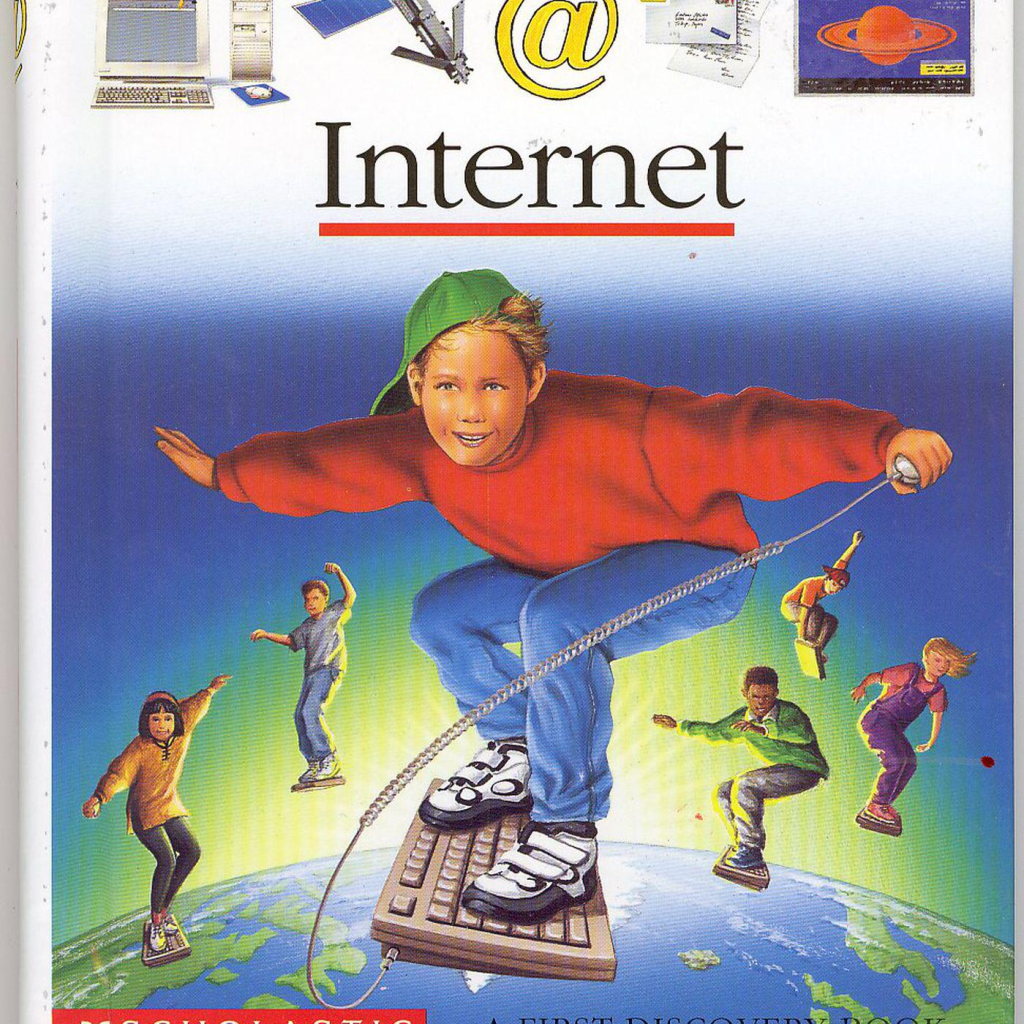
And second, we started to see a certain aesthetic emerge in pop culture as we said goodbye to the decadence/optimism of the 80s, and hello to…
The emo.

Now, I know I know…
The whole emo scene started in the 80s and didn’t go properly mainstream-pop-culture-phenomenon until the naughties.
But it’s not so much “emos” in particular that I wanna talk about.
Instead, I wanna talk about “emos” in general — the growing love affair with darkness/angst/whatever that started to permeate through pop culture.
Think Grunge. Nirvana. Kurt Cobain — his “teenage angst paid off well” and, then he became “bored and old” (and now the young kids wanna identify with their hero).
And here’s another — Marilyn Manson.
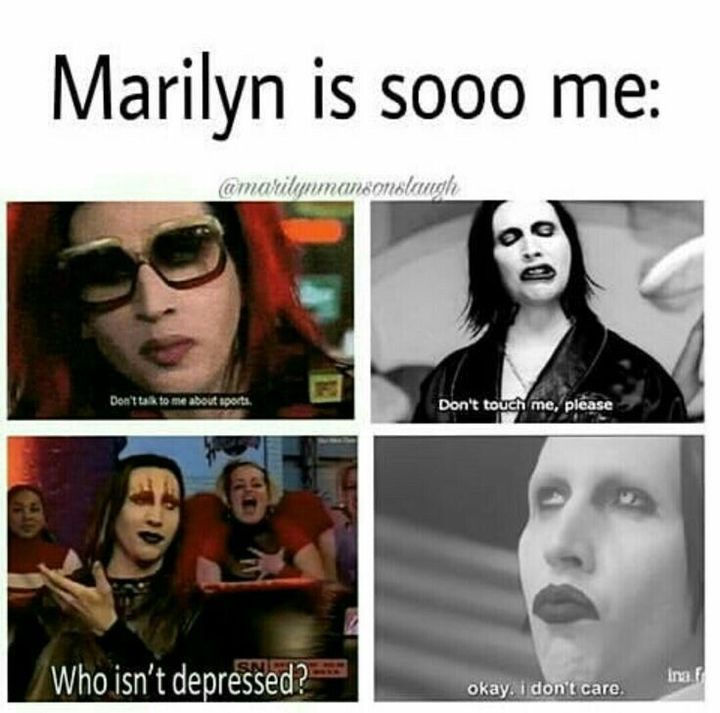
These sorts of currents then spill over into the current century.
Emos take off.
“Alienation is my baseline, depression/anxiety is my identity, and these scars/self-harm confessions are secretly “scene cred” (but don’t tell anyone).”
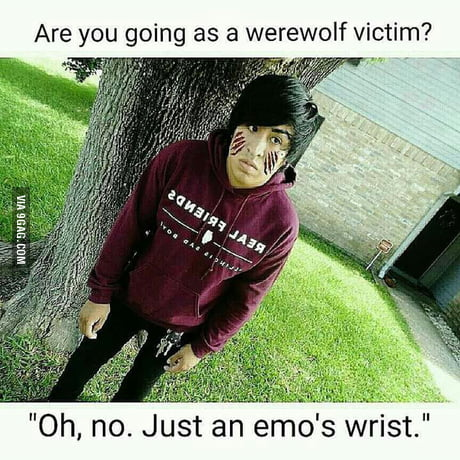
And things just start to accelerate from here.
Tumbr sadgirls. (The patriarchy wants me to smile.)
PUAs. (Women don’t want me.)
Pro-ana/thinspo…
Everyone’s becoming emo, and they’re all doing it on…
The Internet!!!
LiveJournal/MySpace/Facebook/etc./etc.
The whole lot gets hashtagged, sentiment analyzed, and catalogued.
Suddenly, victimhood becomes two things at once:
- A hypernormal feature of popular culture.
- An easily mined dataset.

Now we have victimhood as self-notating digital data, Marc Andreessen’s favorite plaything — the techocapital machine — slowly starts to take notice.
It sees metrics it can metric.
Meatspace thoughts it can manipulate meatspace bodies with.
Capital flows it can capitalize on.
Algorithms start propagating victimhood in self-referential loops.
More victims → more attention → more victims → more attention.
Advertiser dollars enter the loop.
Mo’ victim → mo’ money → mo’ victim…
And over the course of a billion and one micro-optimizations, the machine makes a discovery.
Victimhood doesn’t just work as an attractor for people who want to identify as victims.
It works as an attractor for everyone.
It’s like catnip for people.

Now, remember how I gave you a spoiler alert back at the start? — that bit where I said everyone in the manosphere is both a victim and a Marxist, all at the same time?
Think I’m crazy?
Then look at the following meme. If you’ve been paying attention, you’ll get it straight away.

As for the rest of you, notice how just about every man in the manosphere is whinging about feminism/DEI/whatever?
Well, that’s just Marx dressed up in new clothing.
“The problem’s not me, it’s the structure of the oppressive system I’m living under.”
Only difference is, he says Das Capital; you say Gynopolitical Clitocratic Cervix State.
So much for your “will to power” — you just became Nietzsche’s b**ch.
Now, “ressentiment” takes over and flips the moral order.
“My suffering is a mark of my moral superiority…”
The “slave morality” starter pack enters the scene — see if you recognize any of these tropes from the manosphere niches:
- Stocicism
- Endurance
- Moral purity (against “degeneracy”)
- Self-sacrifice (for the “cause”)
- Ascetism
- Frugality/anti-consumption (being/appearing poor becomes a moral stance)
- Divine order
- Civic duty
- Suffering/pain/hardship…
The list goes on, but I think you get the point.
Basically, the average manosphere man is the very thing he hates.
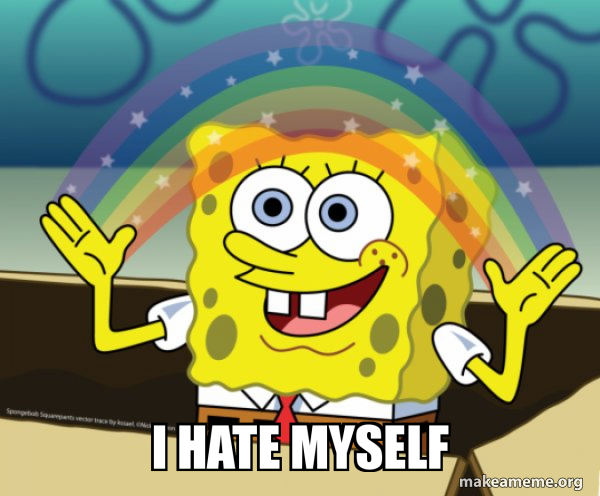
Now, I’m sorry if I hurt anyone’s feelings back there — that wasn’t my intention.
[PS: If it makes you feel better, the manosphere’s not alone here — there are plenty more “empowerment” communities that are ultimately just a bunch of closeted victims.]
What I really wanted to show here was how victimhood has been co-opted into a full-blown attractor.
An attractor that can be used to sell just about anything.

Kinda interesting, right?
Once you see the patterns, you start to see them everywhere.
And once you see them everywhere, you can start to monetize everywhere.
And here’s the best bit (and this is where things get really, really dark) — you can even manufacture victimhood at will.
“Manufacturing defects” just took on a whole new meaning!

Now, first, let’s get one thing straight — you can’t manufacture a victimhood out of thin air.
There needs to be a certain cultural/aesthetic/vibe/science/whatever build up to it first. But we’ll get to that later.
First, let’s sum up a few ingredients you’ll need if you want to manufacture a victimhood.
- Aesthetic hooks — a look/tone that makes an emotion “habitable” (e.g., black clothes for emos, muscle-bound men in the manosphere).
- Grievance frames — A neat little “victim” story (e.g., “no one knows what it’s like to be me” for emos, “the matriarchy/DEI oppresses me” for the manosphere)
- A catchy label — Sticky, memetic shorthand for the victimhood that travels across feeds fast (e.g., emo for emos, MGTOW/red pill/etc for the manosphere)
- A badge economy — Community status/tiers you earn with certain “receipts” (e.g., self-harm for emos, gym transformations for the manosphere)
These are all of the ingredients that go into feeding a victimhood into the machine — memetic visual/semantic hooks + metrics that both machines and meat-brained proto-victims can latch onto.
And yeah, I did just say proto-victim, because we’re manufacturing victimhoods here.
So now let’s get to the manufacturing bit with a case study — the ADHD/autism/neurodivergence boom that’s been breaking the internet since 2020.

Let’s first analyze its structure a bit. Here are a few quick traits at a glance.
- Aesthetic hooks — fidget toys, “neurospicy” merch, pastel brain icons, dopamine molecule tattoos.
- Grievance frame — “The world is built for neurotypicals; it’s hostile to my wiring.”
- A catchy label — “Neurodivergent,” “Neurospicy,” “ActuallyAutistic,” “ADHD brain.”
- A badge economy — diagnosis paperwork, symptom lists, childhood anecdotes, therapist notes, online screening results, daily struggles…
So now for the “how it was manufactured” part.
First, remember that you can’t just manufacture a victimhood out of thin air.
So here’s the buildup to the neurodivergent trend.
- First, we had the DSM (the “Bible” in psychology). Lots of important changes since the 90s that drastically broadened/increased definitions. E.g., Asperger’s merged into Autism broadens the category and prompts more people to self-identify.
- Second, we had the early aesthetic stage. Tumblr/Twitter became hubs for communities. This helps spread the term “neurodivergent” into activist, then popular vocabulary.
- Mental health discourse starts to shift toward destigmatization — more personal storytelling online.
- More broadening of definitions takes place. E.g., ADHD becomes more broad, so the diagnosis rates in adults (women especially) goes up.
This was the build-up.
Then, we entered the current decade.
TikTok’s algorithm latches onto “neurodivergent” behaviors — ticks, fidgets, outbursts, whatever.
Now memefication kicks in — “Neurospicy,” “ADHD brain,” “Autistic joy,” etc.
Seeing the lables, mainstream brands catch on and work “neurodivergence” into DEI narratives.
Suddenly, even more content floods the platform — “ADHD symptoms you didn’t know you had”… “signs you’re actually autistic”.
The narrative buids.
Marx locates the oppression in system. Freud channels the psychic discomfort into named identity. Nietzsche inverts “weakness” into “virtue”.
The grievance frame continues to build — “This is why you struggle to do x…”, “The world’s not build for you…”
Now everyone jumps on the train — everyone wants a label of their own.
And, thanks to over-broad, catch-all DSM definitions, anyone who wants a label can get one.
And if you think I’m exaggerating to what extent this can all be manufactured, then just take a look at the tourettes epidemic that took place during COVID — teen girls were literally getting “infected” via the internet.

So now we’ve done the case study, how do you manufacture a grievance of your own?
Well, first you gotta start by indexing/cataloging stuff — vibes, potential triggers, aesthetics, changes in discourse — in broader society. (Remember all the stuff leading building up to the neurodivergent trend?)
Now, once you’ve got stuff indexed, you can invent micro-identities around it. Identities that hit underserved “emotional niches”.
Here are five quick ideas that tie into real-world stuff you can index right now.
- Algorithmically marginalized: “I’m oppressed by the algorithm.”
- Climate-induced attention fatigue: “I can’t focus because the planet is dying”
- Crypto-dispossessed: “Lost my savings on a shitcoin because fiat colonialism”
- Gig-orphaned: “I’ve been abandoned by the job market into perpetual gig work.”
- Screen-burn survivors: “My optic health was ruined by remote work and Zoom culture.”
Now, you gotta start priming the channels with “diagnostic” memes/quizzes — stuff that people will instantly relate to.
For example, let’s say we wanna run with “screen-burn survivors” — now you make a quiz: “Do you have hyperfocal drift syndrome?”
Let your creative juices flow.
Now, you gotta create the fandom — the mythology that shapes the victimhood.
Think Marx (systemic/structural) or Freud (Trauma) or both… then do the Nietzschean moral inversion such that “victim” becomes “martyr”.
And just like that, you’ve got the foundations of a victimhood.
Takeaway
Look, I know that all of the above was both too long (longer than a normal edition), and too short (far too much material summarized far too vaguely/briefly).
But, hopefully, you get something out of it.
Some ideas about how you can “create your own niches” or identify emerging “niches” before anyone even notices them.
And, hopefully, you also get some ideas about how to market to “victims”. (If you can “speak” to their structural/traumatic grievances whilst simultaneously pulling off the Nietzschean “moral inversion”, you’ll have superpowers.)
But, for now, this has gone on far too long. So, I’ll just leave you with three real communities that are emerging out of a victimhood mentality right now.
- Dopamine monastics (“TikTok brainrot overstimed/cooked us”)
- Urban resilience guilds (“When SHTF, we can’t count on city infra”)
- Purity minimalists (“PFAS/microtox poisoned us”)
And now you know the structure of the grievance, the moral inversion, and how to “help it emerge”/hook into its memetic space, you basically know everything you need to know to monetize it.
The only piece missing is the affiliate program. Lucky that last one matches with HealthTrader, hey?

Closing Thought
Long edition this week, so I’ll leave you with a brief closing thought.

Hopefully, I shouldn’t need to explain the moral of the story behind this one.
The only thing I’ll add — if your “great”/”impossible” thing needs monetizing, HealthTrader’s got your back.

__
(Featured image by SevenStorm JUHASZIMRUS via Pexels)
DISCLAIMER: This article was written by a third party contributor and does not reflect the opinion of Born2Invest, its management, staff or its associates. Please review our disclaimer for more information.
This article may include forward-looking statements. These forward-looking statements generally are identified by the words “believe,” “project,” “estimate,” “become,” “plan,” “will,” and similar expressions. These forward-looking statements involve known and unknown risks as well as uncertainties, including those discussed in the following cautionary statements and elsewhere in this article and on this site. Although the Company may believe that its expectations are based on reasonable assumptions, the actual results that the Company may achieve may differ materially from any forward-looking statements, which reflect the opinions of the management of the Company only as of the date hereof. Additionally, please make sure to read these important disclosures.

-

 Crypto4 days ago
Crypto4 days agoCrypto Markets Slide as Bitcoin Breaks $90K, Year-End Pessimism Grows
-

 Crypto2 weeks ago
Crypto2 weeks agoEuropean Selling Drives Bitcoin’s November Slump
-

 Impact Investing1 day ago
Impact Investing1 day agoTreeblock Showcases Sustainability Solutions at ADIPEC Abu Dhabi
-
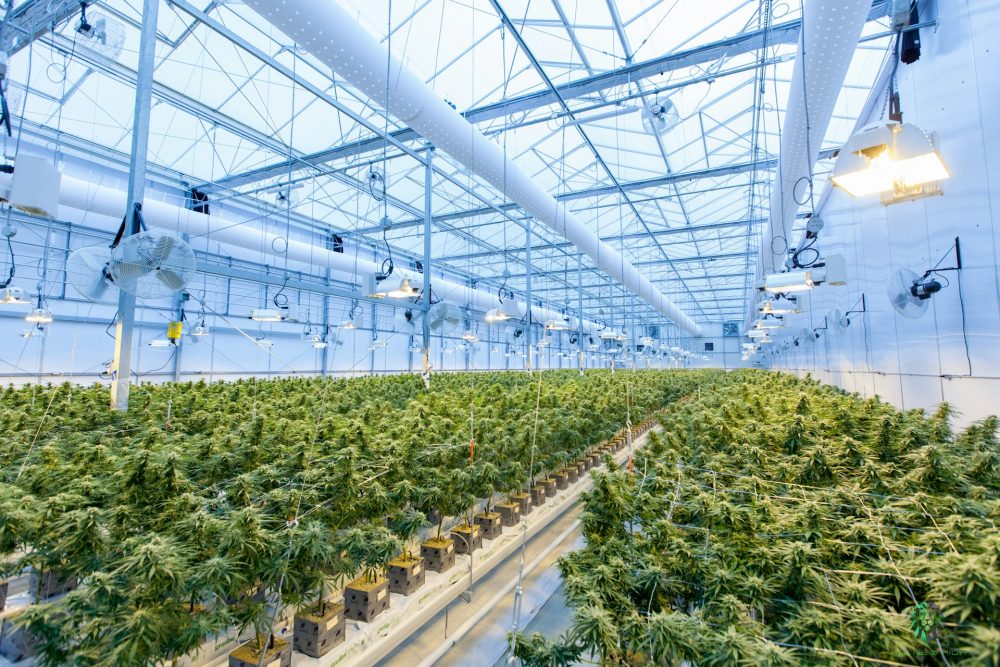
 Cannabis1 week ago
Cannabis1 week agoRemexian Wins Legal Battles Amid German Cannabis Licensing Dispute
